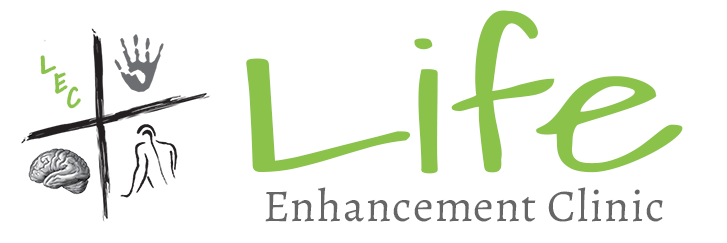Knee pain is a common complaint for many people. One common cause of knee pain is patellar tracking problems. This is when the patella (your kneecap) does not track properly when bending your knee. Since you bend your knee with walking, climbing stairs, running, jumping and even standing, then if your knee is dysfunctional it can lead to pain.
There are four reasons that are common factors when it comes to your knee not tracking properly. We will discuss each of these briefly.
Increased Q-Angle
The Q-angle is simply a measurement that refers to the intersection of a line that is drawn from the center of your kneecap to the hip (the anterosuperior iliac spine to be precise) and a line drawn from the center of the kneecap to the little bump under your kneecap (the tibial tuberosity).
This measurement is normally 10-15 degrees, with larger angles noted in women. If the angle is too large it is a factor that contributes to excessive lateral tracking of the patella during motion.
Muscle and Fascia Tightness
An overtight iliotibial (IT) band can keep the patella from moving properly during motion. This is often seen in “runner’s knee” and other knee tracking pain syndromes. Another area that might be overtight is the ankle plantar flexors. If these are too tight your foot will overpronate (think about your arch falling) whenever your ankle is flexed. This causes a twisting on the tibia and changes its relationship to your kneecap. This can cause tracking problems as well. If your quadriceps or hamstring muscles are too tight, they also will affect the mechanics of the knee and lead to compensation patterns that cause pain.
Weakness of the VMO
The vastus medialis obliquus (VMO) muscle is part of the quadriceps muscle group. Weakness from disuse or inhibition due to joint swelling or pain can also lead to poor stability of the knee. This leads to improper tracking, poor movement patterns, and the development of pain syndromes. The firing pattern between the VMO (the medial part of the quadriceps group) and the vastus lateralis (the lateral part of the quadriceps group) can be altered which leads to an imbalance. One muscle pulls more than the other causing proper patellar movement to be compromised as a result of this tug-of-war.
Hip Muscle Weakness
Weakness of your hip abductors (the muscles that move your leg and hip outwards) and external rotators (the muscles that twist your hip and foot out) change the load and weight bearing at the knee. This can all effect the movement patterns at the hip and knee causing patellar tracking problems.
These four causes are common causes. There are answers available to chronic knee issues. The answer starts with a proper evaluation that includes a comprehensive assessment of the spine, pelvis, hips, knees, ankles and feet. By looking at overall movement patterns the underlying issue can be identified and proper treatment interventions can be started.
The Q-angle can be improved if there is a functional knee problem during dynamic activities that are increasing the Q-angle. Myofascial techniques and manipulation of restricted joints can also be quite beneficial. Strengthening weak knee and hip muscles is an important part and in some cases foot orthotics may be used to improve poor movement patterns.
If you, or someone you know, is dealing with knee pain then schedule an evaluation so you can start an individualized program to help identify, treat and resolve your knee pain issues!



